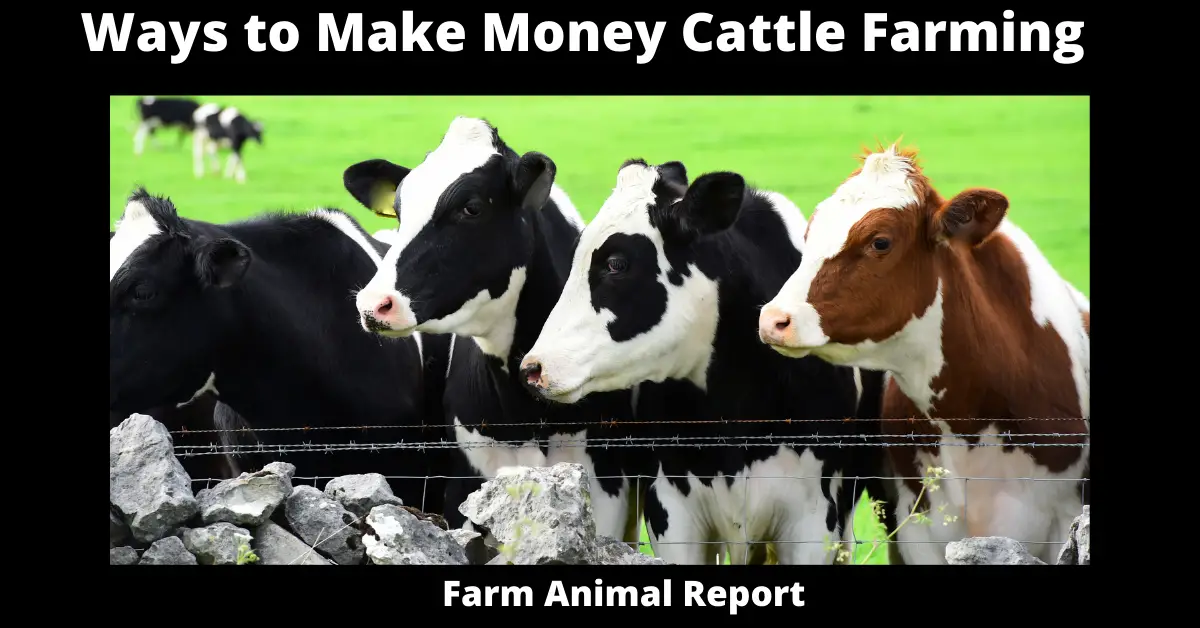As a General Rule Cattle Farming Falls into Three Directions. 1) Dairy Cattle Farming. 2) Beef Cattle Farming 3) Cow-calf Operations There are over 250 beef cattle breeds worldwide, with 60% of them originating in the United States of America.
Ways to Make Money Cattle Farming.
Ways to make money cattle farming. Cattle farming entails the rearing and management practices of two distinct types of animals: one for food purposes such as milk, and another for labor purposes such as plowing, irrigation, and so on. Milch/dairy animals are those that produce milk. For instance, goats, buffalo, and cows. Draught animals are animals that are used for labor.
Because dairy animals are cared for and bred for milk, we must increase milk production to meet demand. The lactation period refers to the period following the birth of a calf, during which a cow begins to produce milk. By lengthening this lactation period, we can increase milk production.
However, along with milk production, quality standards must be met. Dairy farm management is managing dairy animals to improve the quantity and quality of milk produced. As a result, breeds that are high yielding and disease resistant are developed.
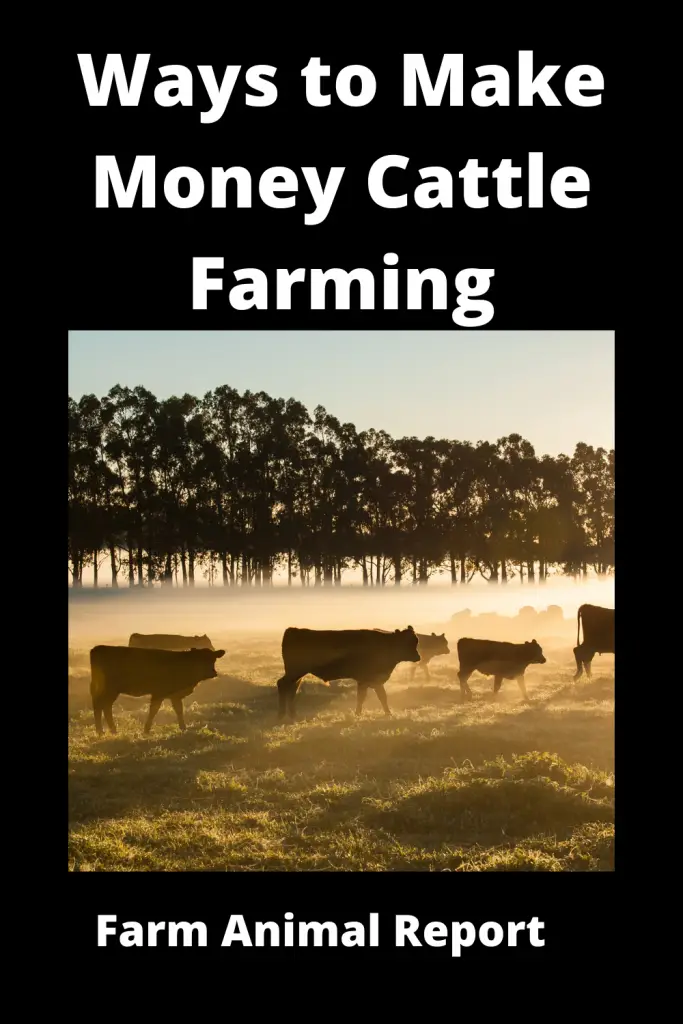
Cattle producers perform critical work; after all, without them, we would not have beef or dairy products. If you’re considering becoming one, go for it. There are numerous opportunities available, and this can be a tremendously rewarding career path to pursue. However, before you make a quick decision, you should educate yourself about this option and what it might mean for you.
We’re going to go into detail about the cattle farming niche to help you understand what it entails, the type of work you’ll be doing, how cattle producers earn money, how much money you can earn, and how to get started. These are all critical points to consider if you’re serious about making money and living as a cattle farmer, so continue reading to learn more.
There are numerous responsibilities and duties associated with being a cattle farmer, and the specific responsibilities will vary according to the type of cattle farmer you wish to become. The role’s primary responsibilities include feeding, administering medication, and ensuring that all equipment and facilities are properly maintained.
Knowing when to give a call to the experts and delegate tasks to them is also critical. There are numerous specialists in whom you must place your trust, as no one can do everything themselves, particularly when it comes to healthcare requirements.
Types of Cattle Farming
Beef Cattle Farming
Farmers of beef cattle are responsible for raising beef cattle to the proper local market weight. The majority of beef cattle farmers breed their stock or cattle early and raise them from there.
Managing livestock and keeping it healthy is critical to maintaining the quality of the beef you produce. Maintaining the cattle’s health can be accomplished by collaborating with veterinarians and specialists who can assist with the work and ensure the appropriate medications and vaccinations are provided.
Cow-calf Operations
Cow-calf operations are somewhat unique. Rather than producing and selling beef, professionals in this department raise cattle and then resell them at weaning. Feedlots and commercial stockyards are the primary purchasers of these cattle. It’s a niche worth considering.
It all varies on the nature of work you want to do and the manner in which you wish to earn money. Both beef cattle farmers and cow-calf operations can profit if they conduct cattle business properly and adhere to consistently high standards.
Dairy Cattle Farming
Dairy cattle farming is another type of cattle farming. As you’re probably already aware, this is when cattle are primarily raised for milk extraction, which is then sold in various dairy forms for import and export purposes.
Naturally, raising cattle capable of producing high-quality milk is a critical aspect of this job. Having the proper machinery and equipment on hand to complete the job efficiently is also critical.
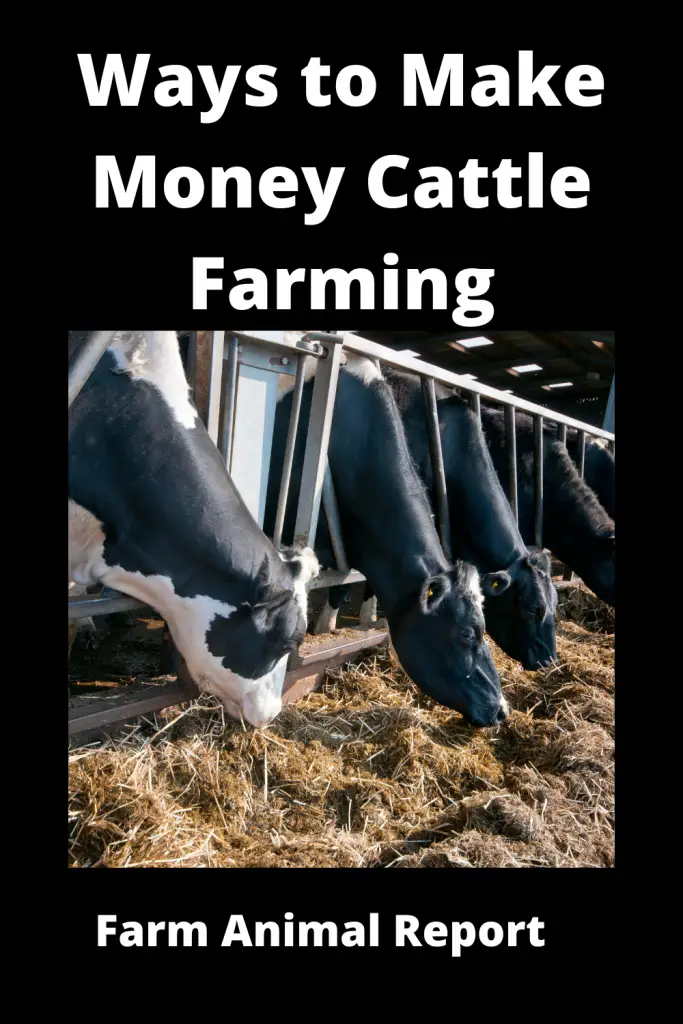
How Do Cattle Farmers Make Money
To begin, cattle farmers earn an average of around US$52,000 per year. They accomplish this by either operating their farms or working as farm managers.
Of course, starting at the bottom means earning significantly less than that, but there will be plenty of opportunities to earn more with clear paths to advancement in this career niche.
What can be the Most Profitable way to Raise Cattle?
Current market values dictate how much you will be compensated for each animal. Present market prices can be found by consulting the national commodities report’s “futures” market for live cattle and other animals. Prices vary according to location.
In general, beef cattle are the most profitable and easiest livestock producers to raise profitably. Beef cattle require only good pasture, winter supplemental hay, clean water, vaccinations, and plenty of room to roam. You can begin raising beef cattle on a budget by purchasing calves from dairy farms.
Many dairy farmers breed them to Angus, Charolais, or Hereford bulls to keep their Holstein or other milk-producing cows lactating. The resulting half-bred offspring are of no use to the dairy industry but make excellent beef cattle. You can purchase directly from dairy farms or at public auctions in your area.
Once purchased, beef cattle are typically pastured until they reach the age of 12 to 24 months. Meat at that age is generally of the highest quality. At this age, you will receive the best price for the weight.
How do you Make Money Buying and Selling Cattle?
Cattle sales and buying can be a very lucrative cattle business. A cattle buyer is only interested in the healthiest cattle, whereas a seller is concerned with obtaining the best price for his selling cows. To make money by buying and selling cattle, you must concentrate not only on the transaction itself but also on how the cattle are treated. If you attempt to sell unhealthy or low-quality cattle, you may find that your buying and selling endeavors are unsuccessful.
Set Business Objectives and Create a Business Plan
By defining your cattle business objectives, you can estimate the potential profit. The cattle industry, as well as your local market, must be defined in your business plan. Provide information about the ranchers from whom you will purchase cattle and the operations to sell cattle, as you will most likely be operating in a small geographical area with easily identifiable cattle business contacts.
Before lenders and investors agree to fund your business, they may require you to present this business plan. Your cattle business plan should include a mission statement, farm marketing strategy, financial analysis, ownership structure, and key personnel duties and responsibilities.
Choose Profitable Breeds
Selecting profitable breeds is critical to the success of any cattle enterprise. Due to their robust physiology and propensity for producing high-quality meat, certain breeds, such as Angus and Hereford command a premium price. However, just because a cow or bull is of a desirable breed does not guarantee that the individual animal is of high quality.
To determine whether a cow is of high quality, you can look at its annual milk production, for example, a dairy cow. Cow sellers typically keep track of a cow’s milk production and weight. Cows can produce up to 500 or 1,000 gallons of milk per year, while others produce only 200 or 300 gallons. Cows that produce a larger quantity of milk have a higher quality of milk.
Determining Operating Costs
Before you purchase your first bovine, you should consider several operating costs, including the cost of purchasing or renting a location to keep the cattle while you search for profitable buyers; the cost of keeping the cattle healthy; the cost of hiring employees with the necessary knowledge to care for the cattle; and the cost of providing food and other items to make it an ideal home for the cattle.
For instance, if you want to ensure that your cows receive an adequate amount of nutrients, you must factor in the cost of supplements such as vitamin E, selenium, zinc, and copper. These nutrients help an animal fight off diseases such as mastitis, grass tetany, and bloat. Consider the costs associated with hiring sufficient personnel to oversee the administration of these supplements.
How Many Cows can you Raise per Acre?
Many people prefer to use custom cattle ear tags because they enable them to quickly and easily identify their livestock. Ear tags are highly beneficial because they would allow owners to track and record information such as a cow’s gender, age, weight, the last time she calved, the number of calves she had, and other critical details.
However, do you know how many animals your acre should contain? Alternatively, do you know how many acres of pasture your livestock require? Some individuals own a small amount of land, and others own a large amount, and it can be highly beneficial for them to know the answers to these questions.
Whichever category you fall into, this article will provide you with interesting information that will help you better understand the number of animals you should own based on the size of your pasture. Additionally, you will learn how much land you require based on the number of animals you have.
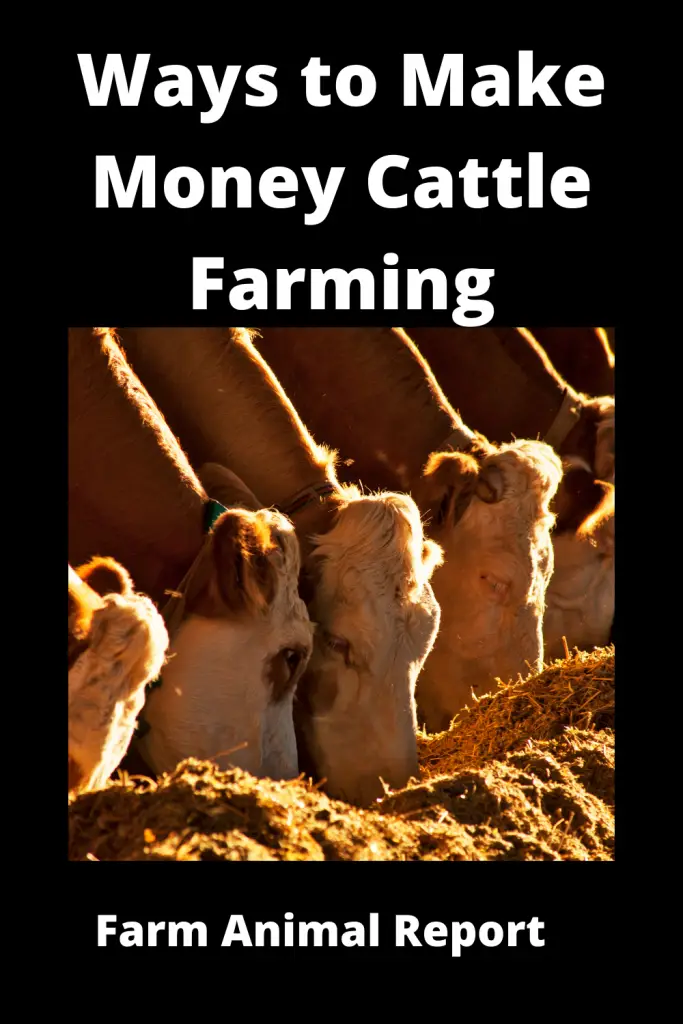
What are the Best Cattle Breeds to Raise for Beef?
There are over 250 beef cattle breeds worldwide, with 60% of them originating in the United States of America. Today, beef cattle ranching is as popular as dairy cattle ranching. The U.S. also includes a significant exporter of beef. Without a doubt, beef cattle add beauty to any farm, and given the variety of breeds, they are truly distinctive in their ways. Let’s take a view of some of the most well-known beef cattle breeds. They can be purchased from sale barns. You also can raise them on your own land, or leased land. Forage production and forage quality determine the value for pasture land and grazing operation
Black Angus
In the United States, it is the most popular breed. This breed outnumbers all other breeds put together. This is because the Scots introduced longhorn herd size that had been crossbred with Angus. The hornless Angus was initially rejected, but its flavor and tenderness improved over time, increasing its market demand.
They have a very low rate of reproductive problems (dystocia), and their apparent large body weights quickly made them popular in the cattle industry. At the moment, The Angus Beef Certified program requires that the beef contains more than 50% blackface and meets ten quality standards. Angus is the most prevalent breed in the United States due to its superior qualities and nutritional values. Numerous meat vendors and butchers throughout the United States sell pure Angus beef.
Herefordshire
It is a British breed native to the county of Herefordshire in England. This breed is well-known for its capability to adapt to various climatic conditions and for its hardiness. Certified Hereford Beef must have a 51 percent white face with no white markings on the shoulders, side of the body, or hip. They are more affordable than the Angus breed.
Piedmontese
They originated in Northwest Italy’s Piedmont region. Its genetic abnormality, dubbed ‘double muscling,’ distinguishes it from other species. They contain a higher protein content and less chemical fat, making them healthier for consumers.
Due to the difficulty that Piedmontese dames have in giving birth to double-muscled calves due to their narrow birth canals, Piedmontese bulls are crossbred with Angus. This effectively doubles the benefits. In the United States, heritage farms make Piedmontese beef available.
Brahman
Additionally, this breed is known as the American Brahman. The United States has exported this breed to several countries, including South America, Australia, and the Pacific Islands. This breed is uncommon in that it has a large body size and an average depth, with medium-length legs and a straighter back.
They are usually light gray but can be black or red as well. Females mature to a lighter color than males. Males’ shoulders, necks, flanks, and lower thighs are darker. A Brahman cow weighs between 500 and 700 kilograms, while a Brahman bull weighs between 800 and 1100 kilograms.
Beef Master
This breed originated in the U.S. through crossbreeding of Shorthorn, Hereford, and Brahman cows. It is fertile and produces excellent milk. They are predominantly red in hue. The bull weighs approximately 1200kg, while the cow weighs approximately 800kg. This breed is popular due to its disease and parasite resistance. This breed of animal is easy to handle due to its calm temperaments.
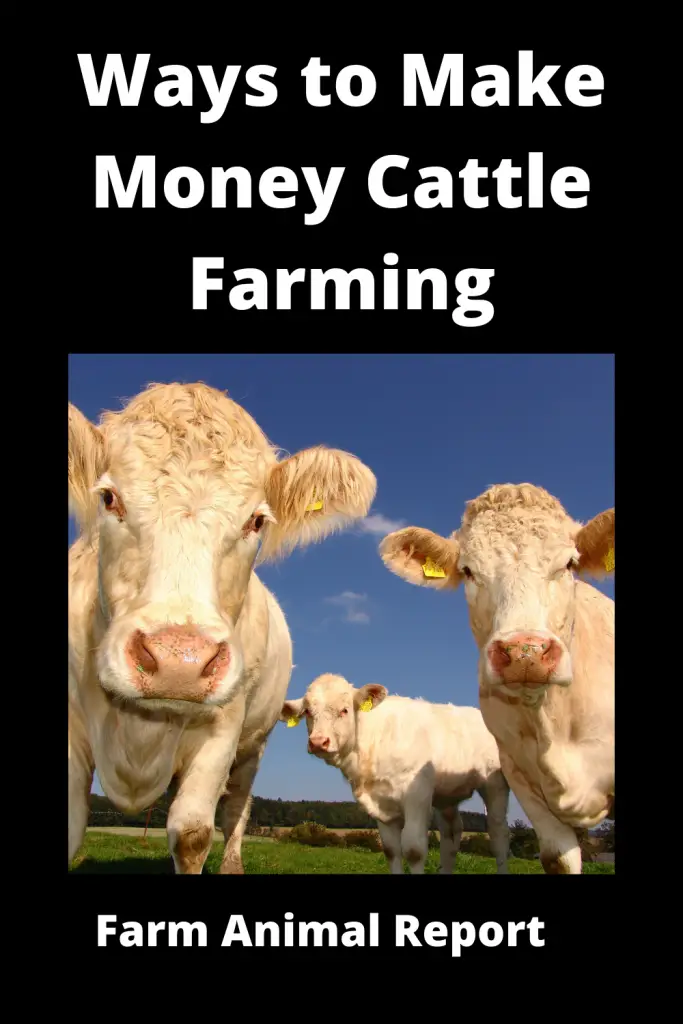
What are the Best Cattle Breeds to Raise for Dairy?
Dairy cows are bred to be greatly productive in milk and relatively docile, allowing humans to handle them easily daily. Naturally, cows vary in temperament. However, the majority of dairy cattle are calm. Additionally, they are typically leaner in the hips and shoulders and have less desirable meat cuts when butchered. Bred Heifers produce calves for increase of herd or sale Barns.
Holstein
This is the iconic black and white “dalmatian” cow that children worldwide are familiar with from picture books and cartoons. Originating in France, these are the dairy industry’s gold standard, one of the most productive breeds of cattle in sheer milk production.
Ninety-four percent of all dairy cows in the United States are Holsteins, owing to their excellent milk production of nearly 9 gallons per day. While Holstein cows are typically gentle and cooperative, Holstein bulls can be pretty aggressive.
Jersey
Jersey cows are a small but productive breed, weighing approximately 900 pounds at maturity and sporting brown coats varying in color from dark chocolate to gold marshmallows. These cows were among the first colonial settlers in North America to keep them.
Jersey cows produce unusually nutritious milk, with 18% more protein and 25% more fat than Holstein cows. A Jersey in her prime will have approximately 5-6 gallons of milk per day. Jerseys are typically gentle and well-behaved and are regarded as excellent mothers.
Guernsey
Guernsey cows are brown and white spotted and approximately the same size as Jersey cows. They are named after the island in the English Channel where they originated. They are tolerant of high temperatures and well-suited to hotter climates due to their pale coat. They are renowned for producing healthy calves and calving with few complications. Guernsey has approximately 4.5 gallons of milk per day, with a high vitamin A content.
Can you Raise a Cow on 1 acre?
It depends on the cow, the acre, and whether you are ever willing to provide supplemental feed. The common rule is that you can raise a cow-calf pair on 1 acre of good, arable land for the summer and 1 acre of good, arable land producing hay for the cow to eat all winter on 1 acre of good, arable land.
Assuming the land is reasonably good, not marginal rangeland, and the cow is a reasonably “frugal” breed. Additionally, you’re managing both acres fairly intensively to maintain peak grass production throughout the year.
How Many Cows can we put on 100 acres?
Each day, an 1110-pound cow will consume 22 to 33 pounds of more forage, or approximately 1/2 a square bale of grass hay. If the stocking rate for the native range is typically 25 acres per animal unit, then 100 acres may support only four animal units, assuming all 100 acres produce grass and are grazable.
Owning a bull for fewer than ten to fifteen cows is not economically viable. Bulls consume significantly more purchased feed than cows and are extremely difficult on facilities and fences.
Cow Manure
The most obvious application of manure on a farm is as an organic fertilizer in the field. Potassium, Nitrogen, and phosphorus are the main nutrients found in cow manure. This is advantageous for farmers because these are the three primary nutrients extracted from the soil by crops grown for raise livestock purchased feed. In essence, farms that apply manure from their animals to their fields are replenishing what they take out.
Applying manure to fields rather than synthetic fertilizer improves soil quality by adding organic matter, which helps prevent runoff. When appropriately applied, cattle manure can improve soil properties such as infiltration due to the additional content, including organic matter and fibrous materials.
A less-considered option, but one that is gaining traction, is manure as a source of biofuel. Cow manure contains a high concentration of energy-dense nutrients, mainly methane. Methane and other greenhouse gases are captured during the breakdown and processing of the materials in a methane digester. The energy released by these gases can be captured and used to generate electricity, clean natural gas, or biofuel for machinery. These applications extend far beyond cost-cutting measures on the farm. They may even be used to power communities with continued adoption.
What is Veal?
Veal is meat from calves typically six to eight months old but can be much younger and are dairy breeds, dairy crossbreeds, weaned calves, or beef breeds. Dairy and dairy crossbreed calves are separated from their mothers and grow out on specialized rearing properties if raised for veal. In contrast, beef breed calves are raised with their mothers and then separated at a later age.
World Cattle Breeder Associations
| Cattle Association | Location | Link |
|---|---|---|
| National Cattleman's Beef Associations | United States | NCBA |
| United States Cattlemans Association | United States | USCA |
| Ohio Cattlemans Association | Ohio | OCA |
| American Angus Association | United States | AAA |
| United Kingdom Cattle Associations | UK | UKCA |
| Australia Cattle Associations | Australia | ACA |
What is annual Beef Production in the United States?
In the United States, beef production is an important industry. In 2017, beef production totaled more than 26 billion pounds. The majority of beef produced in the United States comes from cattle raised in midwestern and western states. Texas, Nebraska, Kansas, and Colorado are among the top beef-producing states.
Beef production is a complex process that involves raising cows, slaughtering them, and processing their meat. The cow’s meat is then sold to retailers or used in other products, such as hamburger patties.
The United States exports a significant amount of beef each year, with Mexico and Canada being the top destinations for American beef. Annual beef production in the United States is a major contributor to the country’s economy.
How much Beef Supplies Human consumption World Wide?
In 2016, the world’s population consumed 58.7 million metric tons of beef. This equates to approximately 34 grams of beef per capita, per day. The vast majority of this beef is consumed in developing countries, where beef is a significant source of protein.
In fact, beef supplies approximately 19% of the world’s animal-based protein. The top five beef-consuming countries are Brazil, the United States, the European Union, China, and Argentina. Combined, these five regions account for approximately 60% of world beef consumption.
How does Dry season affect Dairy Cattle Milk Production?
Dairy cattle milk production varies with the seasons, due to changes in grass growth and quality. Typically, milk production is higher in the spring and summer when there is more grass available for grazing.
In contrast, during the dry season grass growth slows down and the quality of grass deteriorates, leading to a decrease in milk production. This decrease in milk production can have a significant impact on dairy farmers, who may need to purchase additional feed for their cattle or adjust their milking schedules.
To mitigate the effects of the dry season, dairy farmers typically implement a variety of management practices, such as planting drought-tolerant grasses or providing supplemental feed. By understanding how the dry season affects dairy cattle milk production, farmers can take steps to minimize its impact on their operations.
What is Artificial Insemination Process in Cattle?
Artificial insemination (AI) is the process of collecting semen from a male animal and manually placing it inside the female’s reproductive tract. It is often used when natural mating is not possible, such as when the male is not available or the animals are of different species.
AI offers a number of advantages over natural mating, including the ability to control the father’s genes, increased disease control, and easier logistics. The success rate of AI varies depending on the species but is typically around 50-70%.
Cattle are one of the most common animals to be artificially inseminated, and the process is relatively straightforward. First, the cow’s reproductive tract is cleaned to remove any dirt or debris. Next, an AI gun is inserted into the vagina and positioned near the cervix. The semen is then injected through the gun and into the reproductive tract. The entire process usually takes less than 5 minutes, and cows can be safely impregnated using AI.
How Many Cattle Ranchers are in The United States?
According to the United States Department of Agriculture, there were 913,246 cattle ranchers in the United States as of 2012. This number has likely changed somewhat in the intervening years, but it provides a good general idea of the size of the industry.
The majority of these ranchers are located in the Midwest and the West, although there are also significant numbers in Texas, Oklahoma, Colorado, and other states. Cattle ranching is an important part of the American economy, and it plays a vital role in providing food for both humans and animals. With such a large number of ranchers spread across the country, it is no wonder that beef is one of the most popular meats in America.
Final Thoughts
Cattle ranches have historically been relatively safe within the larger real estate ecosystem. They’re a good investment right now because prices for cattle and land on which to raise cattle are increasing, the economy is growing and expected to continue growing, and the market for cattle is increasing in lockstep with this growth. When the real estate market was collapsed in 2008, most farm and ranch land remained stable and lost little, if any, value. When the economy recovered, cattle ranches and farmlands expanded in lockstep with the rest of the economy


